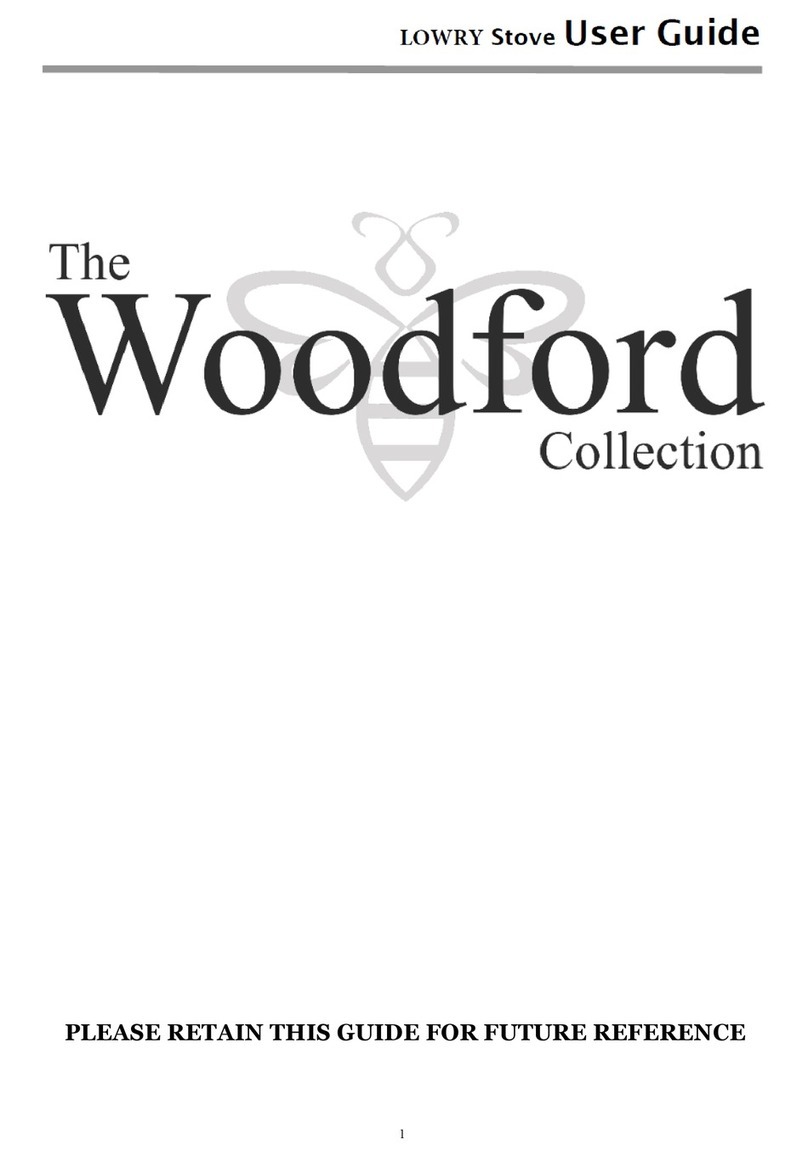
Date: 20/7/2022
Version Number: 2022 Issue no.2
Contents
The Chadwick Stove Collection......................................................................................................................................4
1. Identifying your stove................................................................................................................................................. 5
1.1 Identifying parts & terminology of your stove-External................................................................................... 5
1.2 Identifying parts & terminology of your stove-Internal.................................................................................... 6
2. Warnings..................................................................................................................................................................... 7
2.1 Important Warnings.......................................................................................................................................... 7
3. Health & Safety...........................................................................................................................................................7
3.1 Health & Safety Practice...................................................................................................................................7
4. Installation Requirements............................................................................................................................................8
4.1 Hearths and Recesses........................................................................................................................................ 8
4.2 Combustible Materials...................................................................................................................................... 8
4.3 Air For Combustion.......................................................................................................................................... 9
5. Flue And Chimneys.................................................................................................................................................... 9
5.1 Requirements.................................................................................................................................................... 9
6. Installing The Stove.................................................................................................................................................. 11
6.1Unpacking Your Stove..................................................................................................................................... 11
6.2 Removing the throat plate and liners...............................................................................................................12
6.3 Fitting The Flue Spigot Outlet........................................................................................................................ 12
6.4 Fitting The Hot Plate (Blanking Plate)............................................................................................................
12
6.5 Connecting The Spigot Outlet to The Flue System.........................................................................................13
6.6 Firebox Liner Panels....................................................................................................................................... 13
6.7 Optional Accessories.......................................................................................................................................
13
6.8 Smoke Control Area (The Clean Air Act 1993 & Smoke Control Areas)...................................................... 13
7. Commissioning the stove..........................................................................................................................................
14
7.1 Checklist......................................................................................................................................................... 14
8. Warnings...................................................................................................................................................................
15
8.1 Important Warnings.........................................................................................................................................
15
8.2 Health and Safety............................................................................................................................................
16
8.3 Smoke control areas (The Clean Air Act 1993 & Smoke Control Areas).......................................................16
9. Recommended fuels.................................................................................................................................................. 17
9.1 Wood...............................................................................................................................................................17
9.2 Solid Fuel........................................................................................................................................................ 17
10. Before using your stove...........................................................................................................................................18
10.1 Pointers Before Use.......................................................................................................................................18
11. Air inlet controls..................................................................................................................................................... 19
11.1 Air Inlet.........................................................................................................................................................19
11.1.1 Primary air control............................................................................................................................. 19
11.1.2 Secondary air control......................................................................................................................... 20
11.1.3 Tertiary air
control
..............................................................................................................................21
12. Lighting your stove................................................................................................................................................. 22
12.1.1 Smoke control areas...........................................................................................................................
22
12.1.2 Fuel overloading................................................................................................................................ 22
12.1.3 Operation with door left open............................................................................................................ 22
12.1.4 Dampers / Air controls left
open
........................................................................................................ 22
12.2 Burning wood................................................................................................................................................22
12.3 Burning solid fuels........................................................................................................................................ 22
12.4 Warning-Fume/Smoke emissions................................................................................................................. 23
12.5 Refueling on to a low fire
bed
.......................................................................................................................
24
12.6 Smoke Control Area (The Clean Air Act 1993 & Smoke Control Areas).................................................... 24
12.7 Typical burn for nominal output................................................................................................................... 24
13. Further information for all stove owners.................................................................................................................
25
13.1 Reduced burning (Slow Combustion)........................................................................................................... 25
13.2 Over firing.....................................................................................................................................................25






























